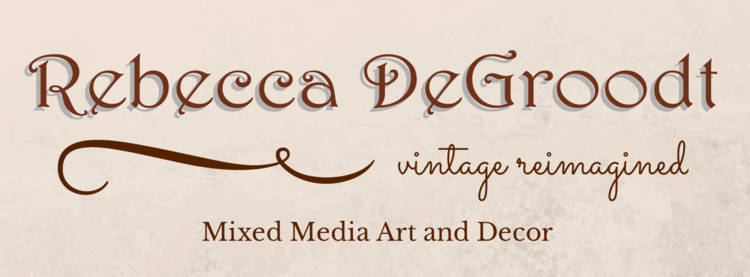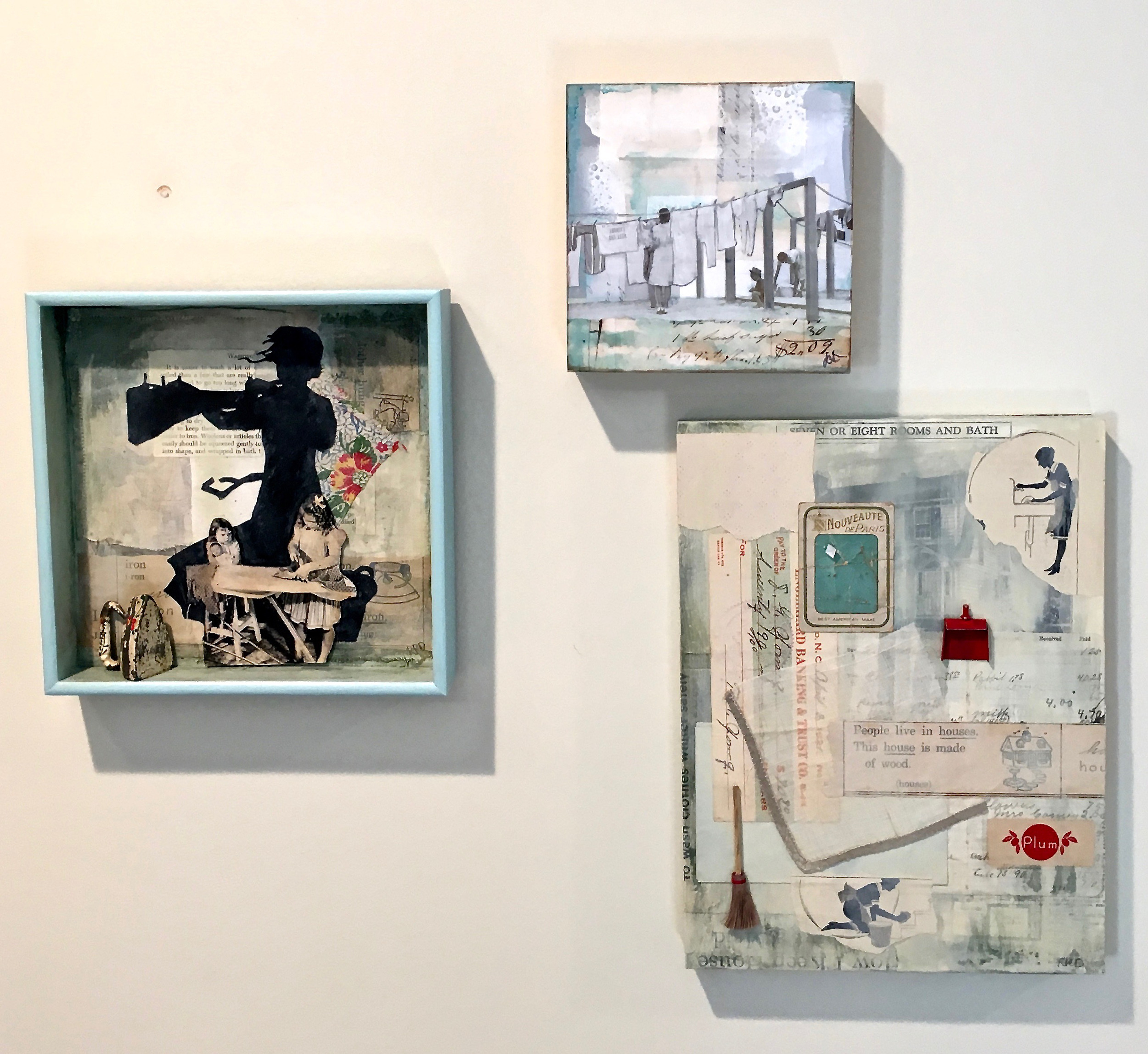A Very Custom Gallery Wall: The Laundry Room
When we remodeled and enlarged our house two years ago we added a laundry room. Previously — in our circa 1970 house, the laundry had been in the garage. A lot of thought went into planning this space because it needed to have multiple functions. It’s for the laundry, but also acts as a butler’s pantry and extension of the adjacent studio space. I wanted a large table in the center, a stainless steel sink and lots of cabinetry. (I may have overcompensated slightly for having done laundry in the garage for a decade, but it’s now one of the most useful spaces in the house.)
I also had an aesthetic feel in mind for this space. I’ve always loved 1920’s and 30’s style, particularly the kitchens, but the look is very different from what’s going on in the rest of our house. So this space would be dedicated to that era’s style (if not appliances.) There are some very distinctive blues that appear in illustrations and decor from that time, a robin’s egg blue but also a darker shade — maybe you would call it a “Dutch” blue. I had the cabinet maker paint the cabinets in a custom blended color reminiscent of that darker blue. I left some of the shelves open to display glass jars, vintage ceramics and tins. I knew that I would frame and hang pages from a 1920’s Royal Baking Company recipe booklet that belonged to my grandmother in a gallery wall, but there are two large wall spaces that needed art.
Laundry Day by J.C. Spock
Scrolling through Instagram early last spring I saw that mixed media artist J.C. Spock had posted a new series of collages called Life in the 30’s. Her work features a washed out mostly monochromatic palette often with swatches of faded sky blues. I immediately fell in love a collage featuring a black and white photograph of women hanging out laundry. What could be more perfect for my laundry room? But a 6x6 panel could not carry an entire wall, so I had the pleasure of creating a small collection of pieces to complete the grouping.
Elements for Housekeeping2: The Oak Park
I have a Dover reproduction of a Sears Roebuck House catalog and had wanted to create a collage based around one of the illustrations for a long time, the housekeeping theme I was working with provided the perfect opportunity. Silhouettes of a maid from an advertisement in an old Ladies Home Journal magazine, a dollhouse broom and dustpan set, a bit of a hand-stitched linen napkin, a button card with just one precious mother of pear diamond button remaining and other small pieces of ephemera completed the piece. The elements are blended into a cohesive whole with washes of milk and mineral paints that with their mat and somewhat granular consistency suggest old plaster.
Next up, a tiny toy iron I picked up on an antiquing excursion. In kind of rough shape, it seems to have been well loved and pairs nicely with a black and white photo of little girls ironing doll clothes. Another silhouette ties this piece to the first collage and looms like a shadow of the mother the girls are imitating and a roll they will most likely fill in adulthood. I used a small wood tray picked up at a local thrift shop as the substrate for this shadowbox.
Laundry Day by J.C. Spock, Housekeeping 1:The Oak Park, collage on basswood panel and Housekeeping 2: Ironing, shadowbox assemblage
Elements for A Chicken Story
These two pieces with the JC Spock collage made a complete but small grouping that really only filled one side of the wall. Time for some chicken art! I had an old children’s book illustration that I’d been saving for just the right piece. The colors leant themselves to a painted blue frame; and since keeping chickens was common in early 20th century households, the subject complimented my period “homemaking” theme. I paired the illustration with a happy chicken family (from my stash of vintage figurines) on the inside of a basswood artist panel. As a companion to this shadowbox-type assemblage, I created a collage inspired by JC Spock. I made a semi-transparent transfer of an old photograph as the central image, and added bits of period textiles and text and illustrations from a children’s dictionary and old agricultural magazines. This piece is on a stretched canvas panel.
A Chicken Story, shadowbox assemblage and Girl with Chicken, collage on canvas
In the center of the this wall is a built-in, fold-down ironing board. which was also a common feature in early 20th century homes in the kitchen. It makes the board easily accessible but out of the way — very convenient.
And that completes one wall. I was going to include the second gallery wall in this post — the one inspired by my grandmother’s 1920’s promotional recipe booklet, but this post has already gotten kind of long. So I’ll save that for another time. The takeaway?
One personally significant piece can be the jumping off point for an entire room full of art.
And it doesn’t have to be “art” — it could be a framed book page, a shadowbox created from a favorite object, or a photograph. Let the subject matter, colors or time period guide you toward a theme. Once you have your theme, type it into Google, Etsy, or Pinterest for items to buy or ideas for pieces to hunt for or create yourself.
(In future posts I’ll go step by step through some simple projects for doing it yourself.)
Our girls, the feathered ones anyway








